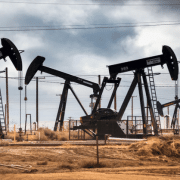⚠️ IMPORTANT LEGAL DISCLAIMER:
The information provided on this page is for general informational purposes only and does not constitute legal, financial, or investment advice. Oil and gas laws, mineral rights regulations, and royalty structures vary significantly by state and jurisdiction. While we strive to provide accurate and up-to-date information, no guarantee is made to that effect, and laws may have changed since publication.
You should consult with a licensed attorney specializing in oil and gas law in your jurisdiction, a qualified financial advisor, or other appropriate professionals before making any decisions based on this material. Neither the author nor the publisher assumes any liability for actions taken in reliance upon the information contained herein.
The global energy sector is undergoing a profound transformation driven by climate policies aimed at reducing greenhouse gas emissions and mitigating the effects of climate change. These policies are reshaping energy consumption patterns and significantly influencing the economics of oil and gas production, including how companies structure, collect, and distribute royalties.
Oil and gas royalties are financial payments made by extraction companies to resource owners—typically governments or private landowners—in exchange for the right to extract and sell hydrocarbons. These royalties form a substantial source of revenue for many nations, especially those with large fossil fuel reserves. As climate policies become more stringent and widespread, the traditional royalty frameworks are being tested, and in many cases, redefined.
This article explores how climate policies are impacting global oil and gas royalties, including changes in revenue structures, investment incentives, fiscal strategies, and geopolitical dynamics. It also examines the broader implications for producing countries, investors, and the future of the fossil fuel economy.
The Shift in Energy Demand and Its Impact on Global Oil and Gas Royalties
Climate policies around the world are accelerating the transition from fossil fuels to cleaner energy sources such as wind, solar, and hydrogen. This shift is reducing long-term demand for oil and gas, thereby affecting royalty income for countries and landowners that depend heavily on hydrocarbon revenues.
As demand declines or flattens, so too do market prices, which directly influence the value of royalties based on revenue or profit-sharing models. Governments must now grapple with the challenge of declining revenue streams while also investing in renewable infrastructure and climate resilience. This financial strain is particularly acute in countries where oil and gas royalties constitute a large portion of the national budget.
Changes in Investment Patterns and Project Viability
Climate policies, particularly those that impose carbon pricing, emissions caps, or stringent environmental regulations, are reshaping investment strategies in the oil and gas sector. Projects with high emissions profiles or marginal profitability are becoming less attractive to investors, who are increasingly focused on sustainability and long-term viability.
This shift in capital allocation has led to a decline in exploration activity and the postponement or cancellation of several new projects. As a result, royalty-generating activities are also slowing down. For jurisdictions that rely on upfront bonuses or lease payments in addition to production-based royalties, this trend represents a significant revenue risk.
In some regions, climate policies are encouraging a move toward shorter-term projects with lower environmental impact. While these projects may be less lucrative in the long run, they often provide more predictable royalty revenues over their lifespan and are more aligned with contemporary ESG (Environmental, Social, and Governance) standards.
Carbon Pricing and Its Influence on Fiscal Regimes
One of the most direct ways climate policy affects royalties is through carbon pricing mechanisms such as carbon taxes or emissions trading systems. These policies increase the cost of production for oil and gas companies, reducing profit margins and, by extension, the taxable income from which royalties are derived.
In jurisdictions where royalties are based on net profits rather than gross revenues, carbon pricing can significantly lower royalty payments. Governments are therefore re-evaluating their fiscal regimes to strike a balance between attracting investment and maintaining revenue stability.
Some countries have begun integrating climate-related metrics into their royalty structures. For instance, differential royalty rates based on carbon intensity or environmental performance can incentivize cleaner production methods while safeguarding fiscal returns. This approach aligns royalty systems with broader climate objectives without completely undermining economic competitiveness.
Legal and Regulatory Adjustments to Align with Climate Goals
In response to global climate commitments such as the Paris Agreement, many countries are reforming their legal and regulatory frameworks governing oil and gas leasing and royalties. These reforms aim to reduce emissions, improve transparency, and support the transition to a low-carbon economy.
New regulations often require comprehensive environmental assessments, stricter methane leak detection, and the use of best available technologies for emissions control. These requirements can increase operational costs, indirectly affecting royalty calculations and necessitating adjustments to existing fiscal terms.
Additionally, some jurisdictions are introducing conditional lease agreements that link continued access to resources with compliance to climate benchmarks. Failure to meet these benchmarks could result in reduced royalty rates or even revocation of licenses, creating a powerful incentive for sustainable practices.
Diversification Strategies for Resource-Dependent Economies
Countries that rely heavily on oil and gas royalties are increasingly recognizing the need to diversify their economies in light of climate policy pressures. This includes investing in renewable energy, sustainable agriculture, and other sectors that can provide long-term revenue streams and employment.
Sovereign wealth funds, funded by past oil and gas royalties, are being redirected toward green investments and climate-resilient infrastructure. These strategic shifts aim to reduce economic dependence on fossil fuels while ensuring fiscal sustainability in a low-carbon future.
Some governments are also restructuring royalty systems to include performance-based bonuses tied to environmental outcomes or reinvesting a portion of royalties into climate mitigation and adaptation programs. Such moves not only align with global climate goals but also help build domestic support for the energy transition.
Technological Innovation and Royalty Adjustments
Advancements in technology are enabling cleaner and more efficient oil and gas extraction. Organizations are deploying technologies such as carbon capture and storage, electrified drilling rigs, and digital emissions monitoring to reduce environmental impact and meet regulatory requirements. These innovations often involve higher upfront costs but can lead to longer-term savings and increased profitability. Royalty frameworks are being adapted to reflect these changes by offering incentives for the adoption of clean technologies or by recalibrating royalty rates based on environmental performance.
Furthermore, digital platforms and blockchain technology are enhancing transparency and accountability in royalty reporting and distribution. This ensures that royalty payments are accurately calculated and fairly allocated, particularly in complex multinational operations.
International Climate Agreements and Geopolitical Implications
Climate policies are also reshaping geopolitical dynamics and international trade relationships, which in turn affect global royalty flows. Countries with ambitious climate agendas are imposing stricter import standards on fossil fuels, including carbon border adjustment mechanisms that penalize high-emission products.
This creates a competitive disadvantage for producers with lax environmental standards, potentially reducing their market share and associated royalty revenues. Conversely, producers who meet or exceed environmental benchmarks may gain preferential access to international markets.
Moreover, international financial institutions and development banks are increasingly conditioning funding on climate alignment, which further influences where and how companies develop oil and gas projects. This trend is leading to a reallocation of capital and a reconfiguration of royalty flows on a global scale.
Legal Disputes and Contract Renegotiations
As climate policies evolve, legal disputes are emerging over the interpretation and implementation of existing oil and gas contracts. Companies and governments are renegotiating royalty terms to reflect changing economic conditions, environmental obligations, and stakeholder expectations.
These renegotiations often center on force majeure clauses, stabilization provisions, and the allocation of climate-related compliance costs. Disagreements can lead to litigation or arbitration, creating uncertainty for investors and potentially delaying royalty payments.
The team is designing new contracts with greater flexibility and clearer language around climate-related contingencies to mitigate these risks. Such clauses include adaptive royalty formulas, escalation triggers based on carbon prices, and dispute resolution mechanisms tailored to environmental disputes.
Opportunities for Reform and Innovation
While climate policies pose challenges to traditional royalty systems, they also present opportunities for reform and innovation. Governments can use this period of transition to design more resilient, equitable, and environmentally aligned royalty frameworks.
For example, tiered royalty systems that reward low-carbon practices, transparent reporting platforms that build public trust, and revenue-sharing models that fund climate adaptation all represent forward-looking approaches. These innovations not only ensure fiscal stability but also enhance the legitimacy and sustainability of natural resource governance.
Collaborations between governments, industry, academia, and civil society can foster knowledge sharing and the co-creation of solutions tailored to specific contexts. Organizations can use pilot programs and experimental fiscal instruments to test new models before full-scale implementation.
Future Outlook and Strategic Considerations
Experts expect the influence of climate policies on global oil and gas royalties to intensify. As more countries commit to net-zero targets and implement carbon reduction strategies, the fiscal and economic landscape for fossil fuels will continue to evolve.
Producers, investors, and policymakers must adopt a strategic and adaptive approach to managing royalties. This includes anticipating regulatory changes, investing in low-carbon technologies, and rethinking long-term resource planning.
In this rapidly changing environment, the most successful actors will be those who embrace innovation, prioritize sustainability, and align their fiscal strategies with global climate objectives. By doing so, they can not only weather the challenges ahead but also contribute meaningfully to a more resilient and equitable energy future.
Climate policies are reshaping the oil and gas sector in profound ways, with far-reaching implications for global royalty systems. These policies are redefining how we calculate, collect, and utilize royalties by altering demand and investment flows and driving legal reforms and technological innovation.
To navigate this complex landscape, governments and industry stakeholders must work collaboratively to design adaptive, transparent, and environmentally aligned royalty frameworks. Such efforts will ensure that natural resource revenues continue to support development goals while contributing to the global fight against climate change.
By understanding and responding to these evolving dynamics, the oil and gas sector can play a constructive role in the energy transition—turning climate challenges into opportunities for transformation and long-term resilience.
Do you have any questions about Global Oil and Gas Royalties? Feel free to contact us here.
Remember: This information is for educational purposes only. Consult qualified professionals for advice specific to your situation and jurisdiction.










